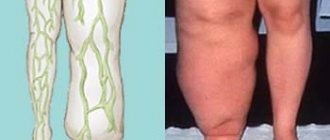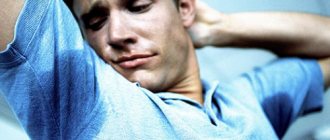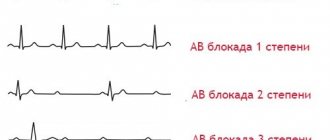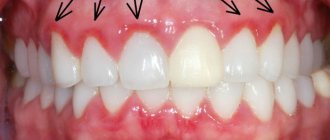Erythema nodosum is a disease in which inflammation of the vessels of the epidermis and fatty tissue occurs. Photos of patients who develop this pathology show characteristic external signs of erythema nodosum - they are difficult to confuse with other skin diseases. Women aged 15-30 years suffer most from this disease. It affects them 3 times more often than men. Before we reveal the causes of this disease and the principles of its treatment, let's first talk about the forms of the disease that occur?
Varieties (types) of disease, classification
There are several types of erythema nodosum, the treatment of which is slightly different. From photographs of patients with various inflammatory formations, it is difficult for a non-specialist to determine what is the difference between one type of pathology and another.
The following types of erythema nodosum are distinguished:
- Toxic, which affects newborns. It is considered a physiological norm and disappears in 7-10 days.
- Infectious, developing against the background of various infections in adults and children.
- Migratory, which may be a symptom of Lyme disease. The rash in this form is ring-shaped with a pale center and is located at the site of the tick bite.
- Multiform exudative, developing against the background of colds. It is accompanied by malaise, pain in the throat and joints. Nodules form on the feet, hands, legs, oral mucosa and genitals.
- Ring-shaped, appearing in the chronic form of the disease. It occurs when the body is poisoned, infectious diseases and allergies. With it, rounded nodules often merge into rings.
Causes of erythema nodosum
Erythema nodosum is a polyetiological syndrome that is found in the practice of many specialists and has two clinical forms: idiopathic and symptomatic.
Some researchers express an opinion about the viral origin of idiopathic erythema nodosum, others believe that this disease, especially in children, is an allergic manifestation in most cases of tuberculosis infection and is observed mainly in people who have had or are suffering from tuberculosis in its various manifestations. In most of these patients, the Mantoux reaction is sharply positive, with exudative phenomena, lymphangitis and general symptoms.
Acute erythema nodosum can develop during or after infectious diseases caused by:
- streptococci,
- viruses,
- rickettsia,
- salmonella,
- chlamydia,
- Yersinia, etc.
The pathogenesis of erythema in such cases is not entirely clear - an allergic reaction, septic granuloma, or a reaction to bacterial toxins. It is possible to develop erythema nodosum against the background of:
- taking medications (sulfonamides, antibiotics, iodine preparations, oral contraceptives),
- sarcoidosis,
- Behçet's disease,
- ulcerative colitis,
- Löfgren's syndrome,
- rheumatism,
- vaccinations and the like.
There are familial cases of erythema nodosum associated with a hereditary predisposition to sensitization of the body by infectious or other agents.
Some researchers classify erythema nodosum as a deep vasculitis.
In 40% of cases, the cause of erythema nodosum remains unknown.
The development of changes in the skin with erythema may be preceded by prodromal phenomena in the form of:
- ailments,
- increase in body temperature,
- arthralgia,
- myalgia,
- catarrhal phenomena.
They are observed 3-5, less often 7-10 days before the appearance of nodes.
The clinic is characterized by the appearance on the front and lateral surfaces of the legs of painful, dense, acutely inflammatory (looking like erythema), bright red nodes (from 2 to 50), the size of a pea to a walnut, located deep in the subcutaneous tissue focally and symmetrically. Sometimes they can merge, their contours are unclear, which is associated with swelling of the surrounding tissues. In some cases, nodes may appear on the back of the legs, forearms, thighs, buttocks, torso, and even more rarely on the feet, hands, and face. Sometimes a macular, papular, urticarial or hemorrhagic rash or a rash characteristic of erythema multiforme may be observed next to the nodes. After a few days, the nodes acquire a bluish, then yellow-green color, reminiscent of the color changes of a bruise, their pain decreases, and complete regression is observed after 2-3, less often 4-6 weeks, leaving temporary pigmentation. These clinical manifestations during the period of their occurrence are also accompanied by fever, disturbances in general condition, pain in the joints and bones. Some patients may have gastrointestinal disorders and neurological symptoms. Leukocytosis or leukopenia and accelerated ESR are observed in the blood.
Histological changes in the tissue of nodes can be of three types:
- tuberculoid structure of the cellular inflammatory infiltrate in the subcutaneous tissue with giant Langerhans cells without caseous decay;
- nested placement of cellular infiltrate with giant Langerhans cells without a clear tuberculoid structure;
- nonspecific inflammatory changes in the subcutaneous tissue.
In addition, there is also chronic erythema nodosum, which is not accompanied by acute inflammatory phenomena; the nodes are mildly painful, remain unchanged for months and resolve without decay, leaving no lasting trace. In such patients, foci of focal infection are often detected.
It is believed that the clinical variants of erythema nodosum should also include migratory erythema nodosum, described by Beferstedt in 1954. In this case, the provoking factors are pregnancy (up to 40%), especially in the first trimester, streptococcal infections are in second place, and sarcoidosis is in third place. The number of nodes is formed from 1 to 8, often asymmetrical placement, although a symmetrical version can also be observed. The nodes are susceptible to migration and relapse, the average duration of the disease is 4-5 months, and they regress without leaving a trace.
Causes, factors of occurrence, methods of spread of the disease
Most often, erythema nodosum is a sign of some other serious disease. The causes of this pathology are different:
- Infectious (streptococcal lesions in the form of tonsillitis or scarlet fever, yersiniosis, mite, coccidiosis, tuberculosis, lymphogranuloma, histoplasmosis, systemic lupus erythematosus), which are characterized by the occurrence of chronic foci of infections.
- Non-infectious (ulcerative colitis, rheumatoid arthritis, sarcoidosis, tumors, Crohn's disease).
- With an allergic nature (taking sulfonamide and sulfur-containing drugs, using oral contraceptives).
In some cases, this disease occurs during pregnancy. The provoking factor in its development is the pathological condition of the blood vessels with varicose veins or thrombophlebitis.
What are the symptoms of erythema nodosum?
The main symptoms of erythema nodosum:
- The main symptom of this disease is the appearance of small dense nodes.
- The skin over them is smooth, red, and when pressing on the nodule, painful sensations appear.
- Also typical for erythema nodosum is a change in the color of the skin over the nodules. After some time, it acquires a bluish color.
Erythema nodosum is a disease that affects the upper surface of the lower leg, thigh, and calf. It is often accompanied by fever, anorexia, chills, and poor health. Sick people begin to have joint problems - arthritis.
Usually the disease goes away within 3-4 weeks; for some time, peeling and pigmentation will be observed at the site of the nodules. Along with erythema nodosum, concomitant joint diseases will also disappear. Sometimes the disease becomes chronic. The illness lasts more than a month. Arthritis also becomes chronic.
Signs and symptoms of erythema nodosum
This disease can manifest itself in different forms:
- Acute, which is characterized by a deterioration in the general health of a person, high fever, loss of appetite, and the appearance of specific nodes that have a red tint. These nodes are painful on palpation. Over time, they turn purple and then brownish-yellow. Nodules can appear on the skin of the lower extremities, namely the legs, knees, thighs, buttocks, and less often on the neck and face. Erythema nodosum in its acute form is in some cases accompanied by inflammation of the joints. Often this form of the disease goes away on its own after 6-7 weeks.
- Chronic, in which external manifestations of pathology sometimes disappear for a while and then reappear. With it, erythema nodes often merge, forming extensive skin lesions. Erythema nodosum on the legs in this form is characterized by the appearance of lesions of the epidermis in new places after the old ones have already passed. In this case, the so-called “migration” of erythema nodes is observed. This form of pathology can last for months. It is often accompanied by arthropathy without vascular deformation.
Main symptoms of the disease:
- Dense nodules in the tissues of the dermis and subcutaneous tissue, 1-5 cm in size. They have unclear outlines and at the same time rise slightly above the epidermis. The tissues around them swell and the skin thickens. It has a reddish smooth surface.
- Nodes appear symmetrically on the front surface of the legs. In some cases, unilateral rashes are observed. They grow quickly, but at a certain point they stop growing.
- Erythema does not itch, but hurts when palpated or spontaneously.
- Swelling of the small joints of the feet and hands.
- Compaction of nodes on the 4th-5th day of the disease.
- Change in skin color on the erythema is similar to a hematoma.
After 2-3 weeks from the onset of the disease, its symptoms begin to subside. Without treatment, the disease can become chronic with relapses. In this case, with repeated outbreaks, erythema is isolated. They are distinguished by their density and bluish tint.
Diagnosis of the condition
An experienced doctor is able to recognize erythema visually during the examination. However, the pathology must be verified - for this a biopsy is performed. In this procedure, a small area of affected skin is removed and examined under a microscope.
In blood tests, leukocytosis (increased level of white blood cells) is observed. ESR and C-reactive protein levels also increase.
At the same time, through questioning and additional research, the cause of the development of the condition is determined. If sarcoidosis or tuberculosis is suspected, a chest x-ray is performed. A test may also be performed to check for streptococcal infections. Sometimes a stool test and colonoscopy are additionally necessary (if intestinal disease is suspected).
Erythema nodosum and sarcoidosis
In 25% of cases, the main cause of erythema nodosum is sarcoidosis. Using radiography, fluorography or computed tomography, bilateral enlargement of intrathoracic lymph nodes is detected.
It is known that the onset of sarcoidosis in the form of erythema is a good prognostic sign. Löfgren's syndrome may manifest itself in this way . There is only an important caveat - most often a favorable outcome concerns people of Northern European origin.
Complications of the disease, why the disease is dangerous
Erythema nodosum is a disease that is dangerous due to its possible complications. Its acute phase often turns into a chronic phase, the treatment of which is characterized by its complexity. That is why one cannot hope that such a pathology can disappear without a trace on its own or through the use of traditional medicine recipes. Photos of patients chronically suffering from this disease are simply shocking with terrifying skin lesions not only of the lower extremities, but also of other parts of the body. Only an experienced doctor who has established the correct diagnosis and prescribed the correct treatment will help get rid of it.
The most effective means
Many patients ask what the most effective means are to get rid of the disease forever. Answering this question, I would like to immediately note that there is definitely no suitable medicine for everyone, since its appearance is associated with a number of other current pathologies.
People suffering from a chronic form of erythema, and those who are encountering this disease for the first time, need to know that it is necessary to strictly follow all the recommendations of the attending physician and then the disease will definitely recede.
People are chasing expensive drugs in the hope that the pathology will disappear forever. But price and quality do not always coincide. Therefore, remember that a patient can get rid of this disease for pennies at current prices.
Among the medications frequently used by medical practitioners, the following list of drugs has proven particularly effective:
- Prednisolone;
- Dimexide;
- Celandine grass;
- Amoxiclav;
- Claritin;
- Indomethacin.
All these medications are freely available in pharmacies and are not expensive. The dosage and duration of administration should be determined only by a doctor.
Since only he, having found out the cause of the erythema, can accurately determine the need to take the drug. And the senseless consumption of any medications has never brought additional benefit to anyone.
Diagnostics
Although this disease has characteristic symptoms and signs, only a doctor can confirm the diagnosis. In this case, the patient needs to visit not only a dermatologist. He may need to consult a rheumatologist, therapist and other specialists who will determine the causes of this pathology and prescribe adequate treatment.
Erythema nodosum is most often diagnosed immediately upon examination. The patient takes a throat swab, which is tested for streptococcus. It is also necessary to take an x-ray of the lungs to rule out causes of the disease such as tuberculosis and sarcoidosis. Sometimes, to confirm the diagnosis, the patient submits stool, which is examined for the presence of Yersinia pathogens.
This erythema disease is characterized by an increased erythrocyte sedimentation rate. Its characteristic feature is that in some cases it is not possible to determine the underlying disease that led to the pathology. In this case, erythema nodosum is considered an independent disease.
An important point is differential diagnosis, which allows one to exclude diseases such as vasculitis.
Treatment of erythema nodosum
Treatment of this pathology directly depends on the causes that caused it. The doctor prescribes therapy only after the patient has undergone a complete diagnosis. This is best done in a hospital setting. In acute cases, semi-bed rest is prescribed.
Treatment is carried out using various medications. These include:
- Non-steroidal anti-inflammatory drugs such as Indomethacin, Nimesil.
- Antihistamines (Diazolin, Tavegil, Suprastin, Claritin, Telfast).
- Hormonal drugs (Prednisolone), which are used for allergies, but are not prescribed in case of infectious lesions of the lower extremities.
- Potassium iodide (in the absence of contraindications).
- Antibiotics that are effective in the presence of infection.
- Heparin ointment, which is used for local treatment.
Physiotherapeutic procedures give good results: warm compresses with ichthyol, phonophoresis, UHF, diathermy. After suffering from the disease, the patient is not recommended to undergo various physical activities for a month.
Treatment with folk remedies
Medication therapy complements treatment with folk remedies well. Before using them, you must always consult with your doctor so as not to aggravate the situation by taking contraindicated substances. Such treatment cannot completely replace the use of medications. Various food products are used as anti-erythema agents, which must be included in the patient’s diet. These include: beans, beans, dill, basil, caraway seeds.
Erythema nodosum of the lower extremities is often accompanied by edema. In this case, the doctor prescribes various diuretic herbal mixtures.
Important: Treatment with folk remedies in no way relieves the patient of erythema nodosum, but can significantly alleviate his condition.
Treatment
Whether therapy for erythema nodosum will be effective directly depends on how adequate the treatment of the underlying disease or pathology is. It is necessary to sanitize chronic foci of infection; if necessary, antibiotic treatment and desensitizing treatment are prescribed. It is also recommended to take vitamins C, P, and calcium chloride. To stop the inflammatory process and prevent pain, patients with erythema nodosum are prescribed non-steroidal anti-inflammatory drugs. This is Nurofen . diclofenac . ibuprofen and other medications. Methods of extracorporeal hemocorrection are also used, and laser irradiation of blood is practiced. All these methods contribute to a faster fading of the symptoms of erythema nodosum.
Local use of corticosteroid and anti-inflammatory ointments is also practiced. If there is inflammation in the joints, then bandages with dimexide . Patients with erythema nodosum are also prescribed physiotherapeutic treatment methods. Effective in the treatment of erythema nodosum, ultraviolet radiation, magnetic therapy, phonophoresis with hydrocortisone at the site of inflamed nodes, laser therapy. But it is most difficult to treat erythema nodosum during pregnancy, since at this time the use of many medications is contraindicated. In this case, strict supervision of a specialist is necessary.
Source: https://medside.ru/uzlovataya-uzlovaya-eritema
See also:
- Oily seborrhea Sulsena Shampoos for seborrhea Sulsena Causes of seborrhea Seborrhea, as a rule, is accompanied by the appearance of a large amount of dandruff. With reduced sebum formation, dry seborrhea develops. If sebum production increases, oily seborrhea develops. Reinforced […]
- Genotyping of papilloma virus HPV genotyping: what is it? Published: August 17, 2020, 1:43 pm The need to carry out HPV typing is due to the importance of determining the nature of the disease and making a prognosis for its course. HPV genotyping is an integral part of the diagnosis of the disease and is carried out […]
- Herpes virus enlarged lymph nodes Inflamed lymph nodes in the neck and groin with herpes No comments 33,847 Primary infection with herpes is always accompanied by inflammation of all groups of lymph nodes on the body. Depending on the state of a person's immunity, symptoms vary. Basically the temperature rises, more or less [...]
- Allergic dermatoses symptoms Allergic dermatoses: why and how they develop, classification, treatment Allergic dermatoses are a group of diseases of an allergic nature that are manifested by a variety of skin lesions. In the last decade, the share of this pathology in the structure of overall morbidity has been growing. […]
- Herpes after Amixin AMIXIN: a new milestone in the treatment of herpes Herpes simplex is one of the common viral diseases. The cause of infection is herpes simplex viruses type I and II. Most often they affect the skin and mucous membranes. Moreover, type I virus usually caused rashes on the upper half of the body, and type II […]
- Dermatosis of pregnancy itching How is dermatitis treated during pregnancy Dermatosis of pregnant women is one of the common problems that doctors have to deal with. Since the skin disease is associated with the body’s response to an irritant that enters it, during the period of pregnancy it is also dangerous for […]
- How to treat acne from the inside What tablets are used to treat acne on the face from the inside Contents Antibiotics What antibiotics help with acne? When taking antibacterial drugs, it is possible to overcome the bacteria that provoke the formation of acne. Also, the action of the antibiotic is aimed at eliminating [...]
- How to treat freckles???????? ?? ????, ??? ??????????, ???????? ??????? ?? ??????? ?? ???? ????? ?????????? ????? ????????? ??????????. ??????? ??????? - ?????? ?????????–?????????? ?????, ?????????? ? ??????? ?? ????, ?????, ????? ? ?????. ??? ?????????? ?? ????????, ???????? ??????? […]
Features of erythema nodosum in pregnant women
Not only a dermatologist treats this pathology during pregnancy. Therapy is started after examination by an obstetrician-gynecologist and other specialists to identify possible causes of the disease. Erythema nodosum harms a woman's health, but has little effect on the fetus. A pregnant woman may experience various complications in the functioning of the cardiovascular system. Sometimes this pathology goes away on its own after the 2nd-3rd trimester. In this case, it is associated with the woman’s body’s reaction to pregnancy. To treat erythema nodosum in pregnant women, Indovazin or Curantil is used topically. Parcetamol can be prescribed in small doses.
Erythema nodosum on legs
What is erythema nodosum?
A pathology called erythema nodosum can be recognized by the presence of compactions (nodules) 0.5-5 cm in diameter in the area of the buttocks, thighs and lower legs. As a rule, damage occurs on two legs at once, symmetrically. It is unpleasant to touch the nodules as it causes pain. The disease occurs in a migratory, chronic or acute form.
What changes does erythema cause?
If a diagnosis of erythema nodosum is made, then a nonspecific inflammatory process is implied. Adipose and other subcutaneous tissues suffer, the disease negatively affects small blood vessels. During the first few hours or 2 days of the disease, examination under a microscope shows an inflammatory process on the wall of the vein, sometimes on the wall of the artery. There is swelling of the walls of blood vessels and the endothelium at the cellular level, compactions are formed - infiltrates, based on eosinophils and lymphocytes. Hemorrhage in adjacent tissues is also observed.
7 days after the first symptoms of the disease are detected, permanent changes occur. The cellular infiltrate includes giant cells, histiocytes, and lymphocytes. Vessels become impassable. Histiocytes, plasma cells, and giant cells penetrate the fat lobules. In some cases of the disease, a microscopic abscess is created.
The disease progresses, causing connective tissue to grow in place of fatty lobules and infiltrates on the walls of blood vessels. It is believed that the disease does not damage the outer dermis and epidermis.
Why is erythema nodosum dangerous?
When erythema nodosum appears, doctors immediately look for hidden pathologies. The fact is that this phenomenon in itself is safe for life. But often erythema nodosum of the legs accompanies various diseases. For example, the underlying disease is still at the development stage and does not have clear symptoms. With erythema nodosum, it is necessary to examine the body as completely as possible for other abnormalities.
Usually erythema recurs, but it does not pose a big threat. You can only talk about danger if there are concomitant diseases. The prognosis for patients is good, since the disease is well studied and can be successfully treated with proven medications. We also note that if there are symptoms of erythema nodosum, a differential analysis should be carried out, that is, other diseases with very similar manifestations should be excluded - erysipelas, Weber-Christian disease, Bazin's erythema and thrombophlebitis.
Erythema nodosum during pregnancy
Women most often encounter the disease erythema nodosum during pregnancy. Doctors have found that pregnant women who took hormonal contraceptives are more susceptible to erythema. Some experts argue that the development of erythema in pregnant women is influenced by distorted hormonal levels, as a result of which unwanted antibodies are formed. It is also worth noting that during pregnancy, immunity decreases somewhat; a weakened body cannot fully protect itself from negative factors, and therefore is susceptible to disease.
Erythema nodosum in children
Children are also susceptible to erythema nodosum. The disease as a secondary disorder in children develops against the background of viral infections, dental diseases, chronic otitis media, and tuberculosis. When it is not possible to identify the provoking diseases, the idiopathic form is diagnosed, that is, a self-occurring process. Children under 6 years of age are less likely to get sick. More girls are at risk. Children are more likely to have erythema in winter and autumn.
How to distinguish vasculitis from erythema nodosum
Some inexperienced people confuse erythema nodosum with a serious disease such as vasculitis. Although they have some similarities, they are very different from each other. Vasculitis is a whole group of pathologies accompanied by inflammation of the walls of blood vessels, which leads to the death of their tissue. Depending on the type of affected vessels, these diseases are divided into the following groups: arteritis, arteriolitis, capillaritis, phlebitis. It can result in Kawasaki, Takayasu, Behcet's diseases, hemorrhagic or mixed, allergic vasculitis, Wegener's granulomatosis, nonspecific aortoarteritis, Churg-Strauss syndrome.
Vasculitis has a characteristic feature: slight bleeding on the skin. They then spread to the joints, nerve endings and muscles.












